Beautiful ideas for the design of a wicket

Such an insignificant detail as a gate can tell a lot about its owners. Let's try to figure out how you can beautifully and non-standard design this element of the exterior of the site.
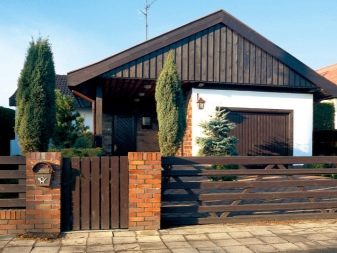
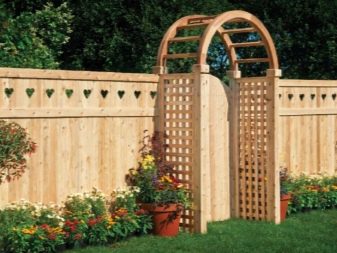
Peculiarities
A wicket is a small door in a fence about 1.5 meters high, which serves to enter and exit the fenced area. Very often this door goes in tandem with a gate. They can be found at any dacha, private house or country mansion.
As part of the fence, they protect the tenants' property from strangers, while opening a view of the personal plot and allowing everyone to admire the aesthetic view of the territories adjacent to the house (if there are any, of course). In any case, the appearance of the fence and the gate is both functional and aesthetic.
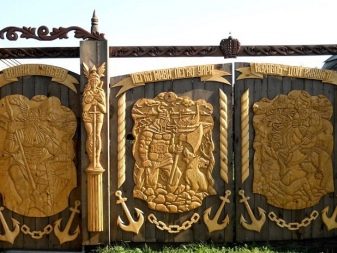

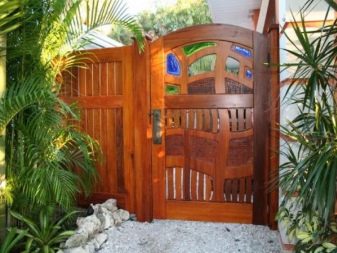
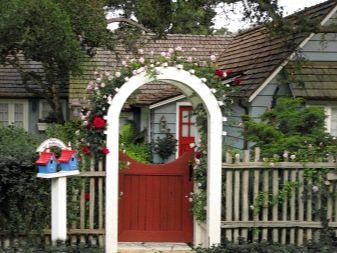
Wickets have a special function. In addition to the fact that they are able to tell about the taste preferences of the owners, as well as their attitude towards others, this is also the very first entrance to the house.
Of course, the gate is the most important part of the fence. But without a wicket, even the most status structures look lonely. In addition, almost any master will be able to cope with the manufacture of a wicket, having the necessary materials, tools and a little imagination. Wickets are sometimes indistinguishable from the entire fence, and sometimes they are its central decoration, a highlight.
The materials for the manufacture of gates are mainly wood and metal. Forged products, combinations of wood and metal, profiled sheets are also common. The features of the wicket also include simplicity of design, simple constipation or their absence. Locks can be replaced with latches, hooks, bolts.
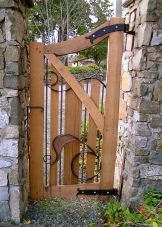



Traditionally, country wickets and gates are opened manually. But progress does not stand still, so now it is possible to open the gate by lightly pressing a button on the remote control. Flex automation is very suitable for gates. It is not difficult to install it even on thin columns, and it works smoothly down to -20 degrees.
Advantages and disadvantages
The wicket is a versatile structure. You can do it yourself or order it from any material, depending on your wishes, the general idea and the size of the wallet.
However, it should be borne in mind that each type of wicket has both pros and cons.
|
Material |
pros |
Minuses |
|
From the professional sheet |
are the most popular and practical for the suburban area; very durable; a fence made of profiled sheets can reduce noise impact; the widest palette; resistant coating; affordability of the price. |
the possibility of deformation in strong winds; severe noise from perching birds. |
|
Made of wood |
the relative cheapness of the material; ease of installation and operation; easy to make yourself; it is not difficult to maintain the appearance. |
fragility (up to 10 years); exposure to external influences; requires significant maintenance; fire hazardous. |
|
Made of metal |
ease and speed of manufacture; hassle-free installation; durability; reliability and versatility; aesthetics. |
susceptibility to corrosion |
|
From euroshtaketnik |
does not rot; wide palette and size range; lightness and compactness during transportation; easy to do it yourself; fire safety; the possibility of various modifications - with and without gaps; resistance to temperature extremes; if the product is damaged, it is enough to replace one or more pickets; easy to clean, just rinse with water |
will not protect the site from overly prying eyes; more complex installation compared to corrugated board; expensive fasteners; injury in work and operation, if the edges are not processed; considerable cost. |
|
Wrought iron |
strength and durability; highly aesthetic appearance, giving uniqueness and originality to the site; good compatibility with other materials. |
time-consuming to manufacture and labor-intensive; more expensive than previous options. |
|
Stainless steel |
strength and reliability; durability; has a special anti-corrosion coating; does not lend itself to temperature extremes. |
Constructions
Since the wicket is an integral part of the fence, its design is usually dependent on the design of the gate or fence. Of course, this is true for those cases when the owners make the fence in the same style.
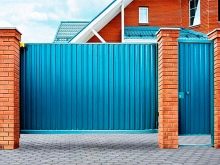
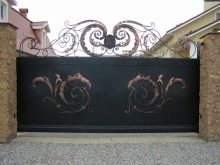
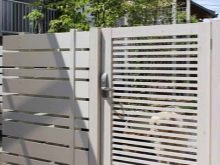
Wickets can be installed:
- regardless of the gate,
- complete with a gate;
- are an integral part of the gate.
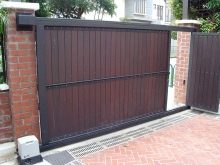

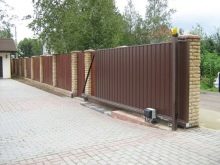
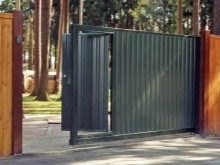


Wickets together with gates can also have different installation options:
- The gate is installed in one opening of the fence, the gate - in the next one.
- The gate and the wicket are installed in one common opening, separated by a pillar of brick, stone, metal pipe.
- The divider does not stand out against the background of the gate.
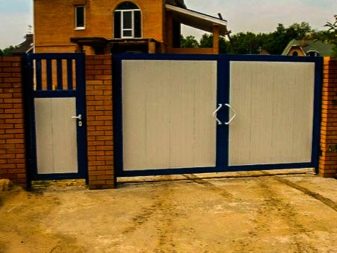
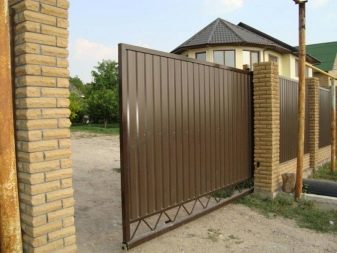
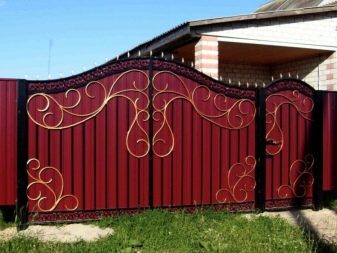
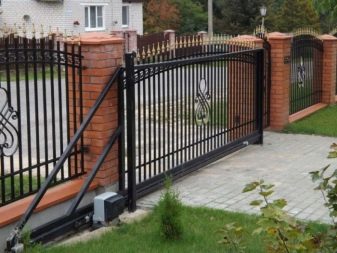
Classic wickets are usually hinged. It is advisable to make it swing open inward. This will ensure the safety of both hosts and guests. Imagine that the street is muddy, and the gate opens outward. You will have to step back, allowing the door to open. At the same time, you run the risk of not seeing what is happening behind your back, and at least getting into an insidious puddle.
In addition, if the gate opens inward, then all the fittings, hinges of the hinges will be hidden behind the fence. Otherwise, you will have to install special anti-vandal hinges.
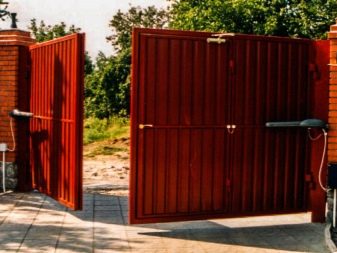
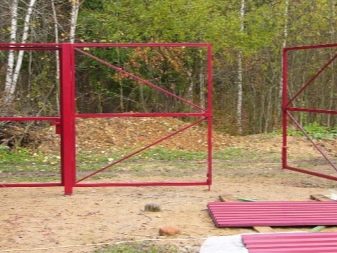
Wickets consist of 4 important parts: sheathing, frame, hinges, constipation.
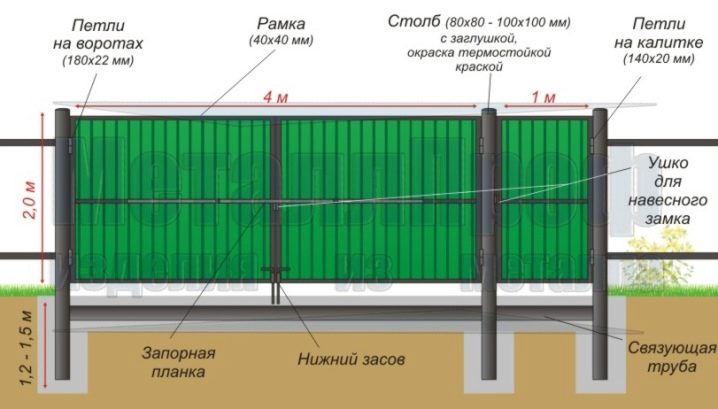
The frame is most often metal, since it withstands loads and external influences better than wood. It is best to make it from a metal profile. Such a pipe will be stronger and, more importantly, more beautiful. The frame is usually rectangular in shape, while the top is not necessarily flat - it can bend in different directions. When building a frame, it is necessary to take into account where the lock will be placed and what kind of cladding will be.
The cladding can be absolutely any! These are wooden boards, various plastics, steel sheets and even old tools, parts from bicycles, wheels ... There is no limit to your imagination! It can be made solid, with holes, combined.
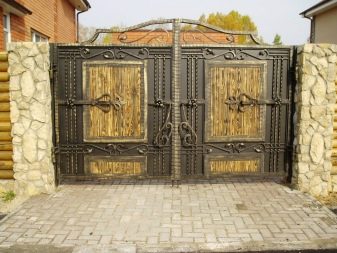
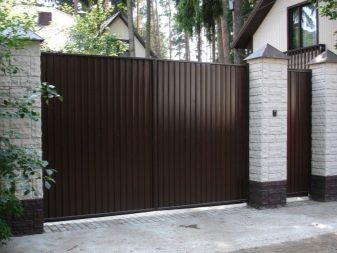
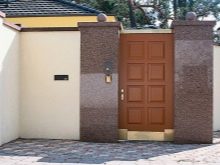
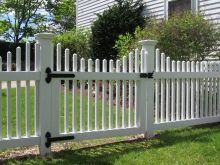
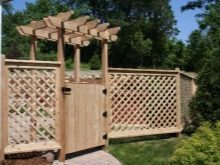
Next are the loops. They can be different:
- garage, so-called "barrels" - the best option;
- ordinary door;
- "Pianos";
- homemade.
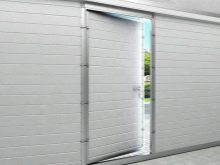
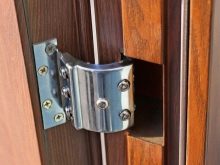
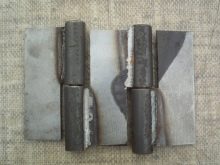
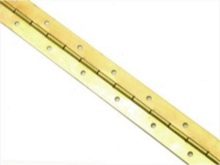
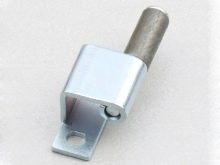
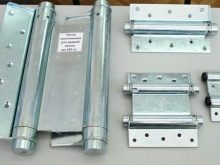
Last but not least, the handle and the lock. Their variety is even more impressive than the cladding options!
Locks are divided into mortise and overhead, as well as mechanical, electromechanical and electrical.
Mortise locks are considered more reliable, since most of them are hidden in the frame of the wicket. But installing them is much more difficult than the mounted version.
The mechanical model of the lock differs from the electromechanical model in that the latter contains a special electromagnet that allows you to open the lock at a distance. This option of constipation can be brought to the intercom and opened without leaving the house. An electric lock has the same capabilities, but is completely voltage dependent. If there is no light, the castle is useless.
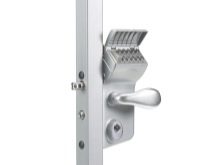
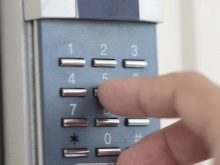
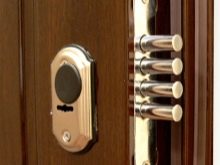
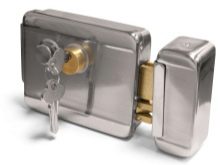
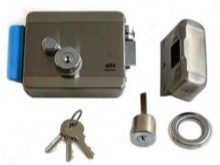
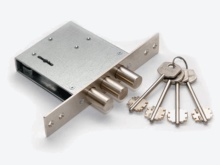
There are owners who prefer to install an automatic swinging system on the wicket. Convenient, hassle-free, no mechanical effort. Only one "but": manually opening the wicket is much faster than waiting for the electric drive to do it.
The handles can be the most incredible, to the point of none.
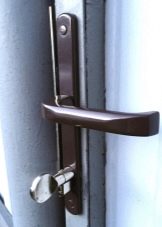

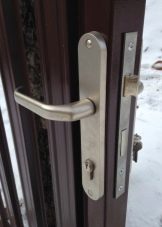
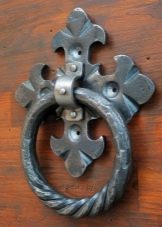
Material
The most common materials for the manufacture of country gates are wood, metal, corrugated board.
If you decide to make a gate from wood, then you have the opportunity to significantly save on materials without resorting to the help of specialists. The naturalness and environmental friendliness of wood allows it to fit perfectly into any style. Another plus is that there is no need to use expensive equipment for installation, and the production itself does not take much time.
The light weight of the structure will not put a serious load on the supporting pillars.


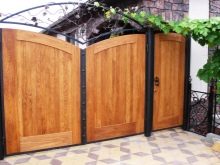
The basis of the iron gate is a metal profile. The frame is made of a steel professional pipe, which is welded to the desired size of the wicket. The weight of such a door will be decent - about 20 kg, if you count only the frame. You can fill it with any material - from scraps of plastic lining to roller shutters.
Forged gates look very beautiful. Their grace and airiness are achieved with the help of openwork weaving, metal curls, flowers, figurines made by the hands of an experienced craftsman. As a rule, forged products are painted black, which is combined with all shades. The upper part is made curly: a semicircle, peaks, decorative inserts. An additional forged visor is sometimes installed above the opening.

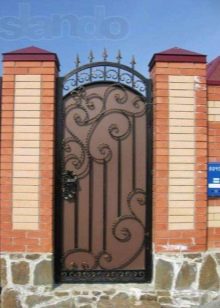
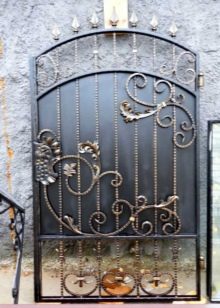
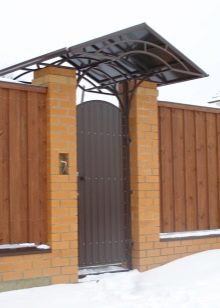
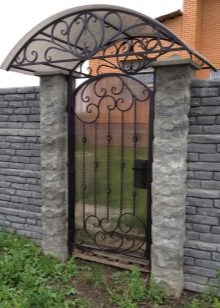
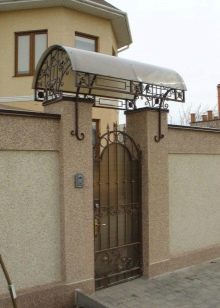
It goes without saying that hand forging is not cheap at all. However, many blacksmiths make individual decorative elements. Every owner can acquire them and decorate a door from a solid sheet with artistic filigree.
Nowadays, country gates made of corrugated board are very popular. They are not as elegant as forged ones, but at the same time they look much more attractive than many wooden structures. Such material is more durable and retains its original appearance longer.
Corrugated steel sheet reinforces the structure and adds utility to the fence.
The price category of these products is located between wood and forged, which also affects the choice of just such gates. The weight of the structure is less than that of metal, so this is another advantage for the installation and operation of such models.
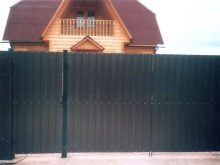
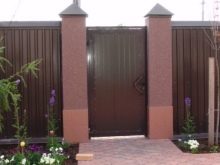
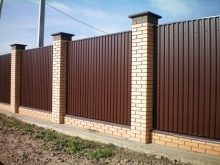
The metal picket fence is also a very popular material for making gates. For the originality of the design, use multilevel blanks, non-standard fittings, decorative elements.
Speaking of stainless steel, we note that such structures are often focused on the general style and can be made from welded mesh, profiled pipes or profiled sheet. Since the weight of such a wicket is significant, the support posts are necessarily made of the same metal in order to evenly distribute the pressure around the perimeter.
They are not so beautiful, but they are cheap and elementary in the installation of a wicket from a mesh (chain-link). The minimum costs for their manufacture, high maintainability and the ability to immediately grasp the space with a glance are extremely convenient for household needs. That is why such fences are placed on outbuildings, poultry houses and so on.
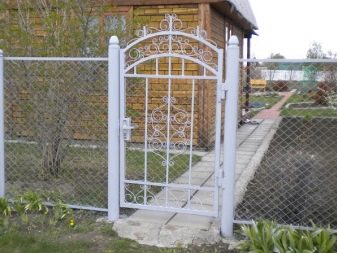
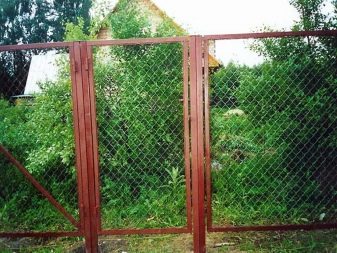
Decor
It doesn't matter what material you decide to make the gate from. It is necessary to make a diagram of the future design, make a detailed drawing, thinking over all the structural details. If you have artistic taste and are planning to build a very special street door, then you will need a sketch of the proposed model.
As mentioned above, the drawing is an extremely important detail in the creation of a wicket.
To draw up it, you should determine the height and width of the future product. Then the calculation of the necessary materials and accessories is done. In addition, the necessary additional material must be indicated in order to avoid mistakes when purchasing all structural elements.
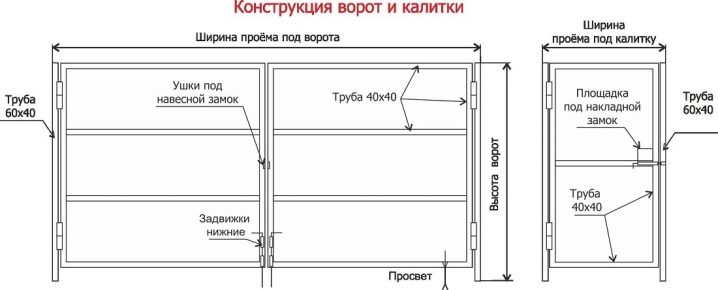
Thorough adherence to the manufacturing technology and the use of the drawing make it possible to do all the work with your own hands.As a result, a garden or back door, as well as other options for gates, can become not just a functional detail, but also an adornment of the entire fence and the site as a whole.
Pay attention to how the drawings of the gates and gates look. A sketch of the placement of the necessary elements.
Drawings, as a rule, are drawn up on the basis of generally accepted schemes for wickets and gates.
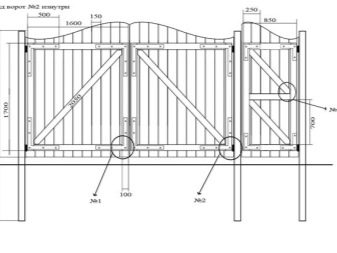
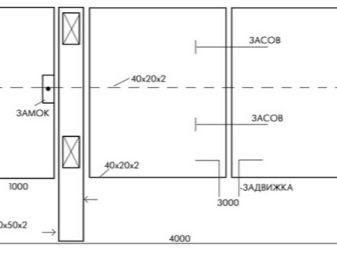
The decor options for gates for a private house are incredibly diverse. This can be decor with live plants (for example, ivy) and flowers, wreaths - according to the season (from autumn leaves, spruce, pine, juniper branches, flowers), pots with live plants.
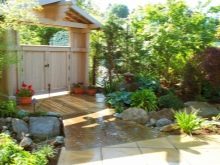
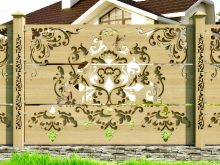

Another decor option is curly overlays on a smooth canvas. The pattern is most often wooden, but metal options are possible - beautiful corners or openwork ligature. Volumetric carving is also popular - a special volumetric pattern consisting of planks with curly edges. Together they create a bas-relief that can change depending on the angle of view - from openwork to a smooth surface.
Combinations of a forged pattern with metal and polymer sheets such as polycarbonate look very nice. The option of a metal profile with forged parts will not only look more expensive, but also last longer.
Wickets decorated with a bar and strip pattern look dignified and elegant.

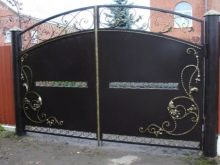
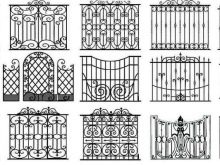
A fence with a net wicket can become a peculiar decor, or rather, an addition to the design of the main territory (for example, a mini-stadium, tennis court, school territory). Nowadays, a mesh made of ordinary metal rods is little used. It was replaced by a new material - 3D 3D mesh ("Fensys", "Fensys", "3D fence"). Its main advantage is the increased strength, which is achieved by using the wave bends of the vertical bars, adding resistance to transverse fracture.
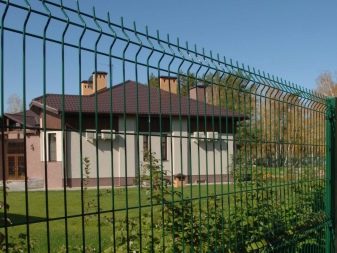
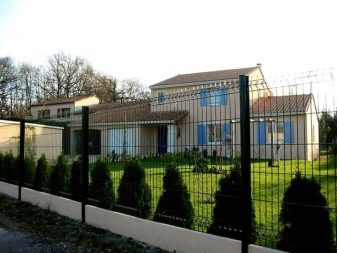
Standard sizes
According to the standard, the dimensions of the wicket are usually as follows: the height is approximately equal to the fence, and the width is from 75 centimeters to one meter. The width of the wicket is approximately equal to the interior doors and it makes no sense to narrow it down to 60-65 cm, since outer clothing will pass through the street door. It is not worth making the canvas wider than 1 meter for safety reasons - a strong wind can simply unscrew the hinges of an unlocked door. The height is equal to the fence, but most often the gate is still lower than human height.
In addition, it is necessary to take into account the opening direction of the wicket.
It is recommended to make it hinged inside the yard. The desired size of the opening is from 80 to 100 cm. It is imperative to weld a false strip, which will not allow the sash to open in the other direction.
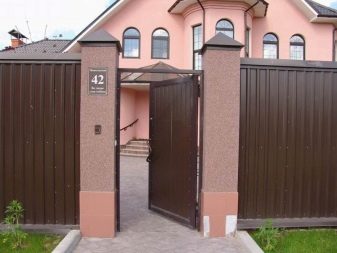
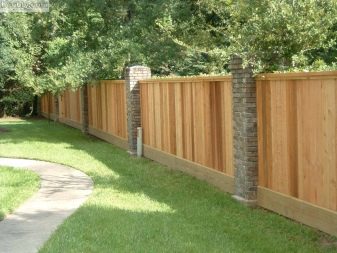
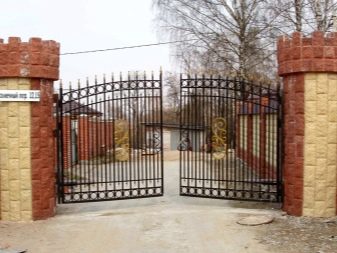
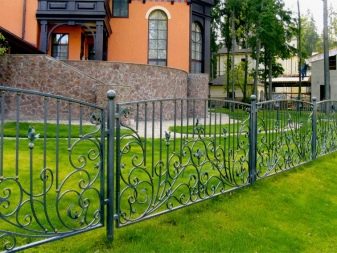
Between the leaf of the wicket and the post on which it will be attached, approximately 6 mm of clearance is left on the side of the hinges and 80 mm from the bottom - based on bad weather and snow. Very often, the wicket is hung on the gate post, so as not to put unnecessary supports. In this case, the common post must be made of steel so that it can withstand the weight of all the doors.
If we are talking about a built-in element in a sliding gate made of a metal profile, there are special conditions, the observance of which will ensure sufficient rigidity, and hence the durability of the structure. Firstly, you need profile pipes with a cross section of at least 60 by 40 mm and a thickness of 3 mm or more. Secondly, the supports must be designed for a significant weight (from 750 kg).
All calculated data are entered into the project of the future product.
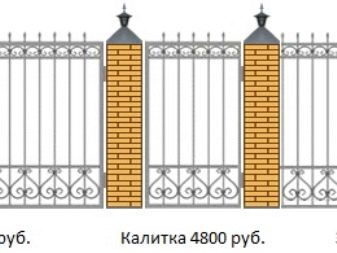
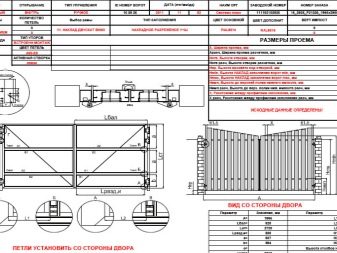
How to do it yourself?
Making a gate with your own hand is quite simple, the main thing is to be patient. And the ability to independently weld metal simplifies the task tenfold.
First you need to check the availability of tools and the necessary details.
|
For wooden |
From a profile sheet |
|
wooden beams fasteners (corners, screws) a pen heck or lock drill screwdriver jigsaw carpentry tools hammer and hacksaw pencil level rope emery |
metallic profile fasteners professional sheet metal pipes anti-corrosion agent primer metal welding machine pencil, tape measure and level Bulgarian shovel hand drill clamps container for mixing concrete |
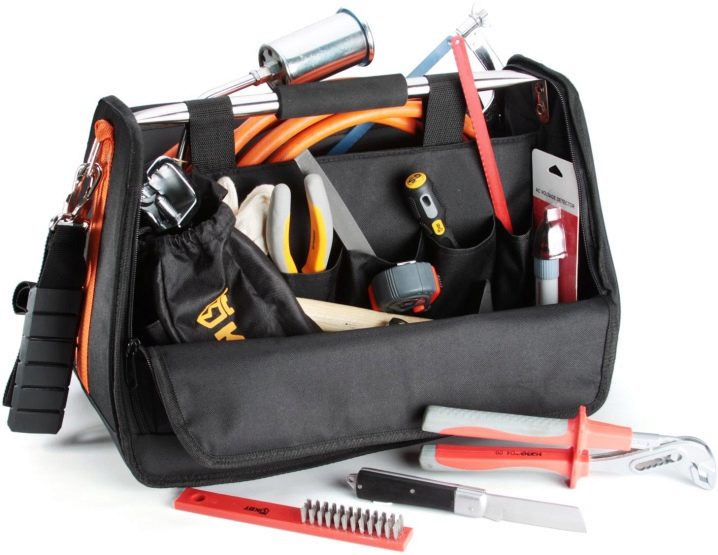
Next, the product is installed. At the beginning, pillars are placed, then the frame of the wicket is made. Following the detailed master classes, it is not at all difficult to make a wooden gate or an option from a profiled sheet.
Wrought iron gates are very beautiful, but, alas, it will not work to make them on your own.
If you are running out of time or simply do not want to spend a long time making a wicket, there is an optimal option - the use of a chain-link mesh. It is a painted metal rectangle covered with mesh. For convenience, when installing the handle, it is worth welding a small piece of metal profile obliquely between the two sides of the frame. It is convenient to install such a gate at the entrance to the garden, for example.
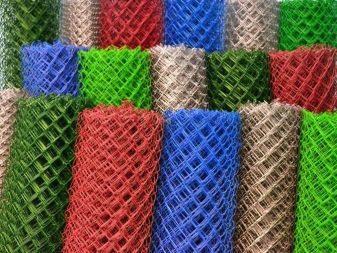
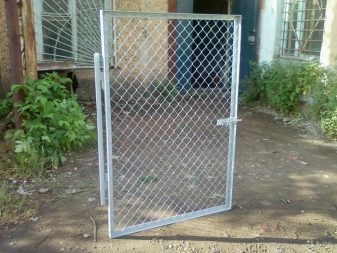
The original gate is the first thing that your guests will see, so making it yourself, you can be doubly proud.
Mounting
Consider the main stages of installing the wicket:
- Choosing a place for the supporting elements. For them, choose wooden poles, a metal pipe or a profile with a cross section of 10 cm or more. Remember that the poles are dug into the ground, so they should be a meter higher than the wicket. We measure the gap between the bearing pillars.
- Preparing the material for the frame and stiffeners. For a wooden structure, we assemble a frame from boards, fastening them with self-tapping screws. To increase its rigidity will help metal plates with teeth driven into the frame. For metal - profile and corners 3 mm thick. Stiffness will be given by pipe cuttings. For cladding, choose a sheet with a thickness of 1.5 mm. Next, you need to clean the metal surface with a grinder and treat it with anti-corrosion agents.
- Preparing the solution for pouring the foundation and crushed stone.
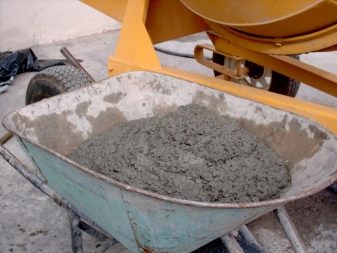
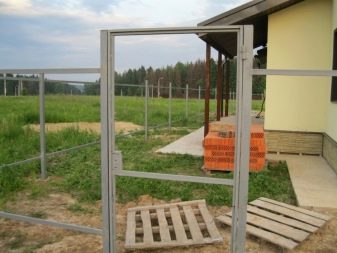
Next, you need to prepare the foundation:
- A drill comes in handy for this. We drill 2 holes 1 meter deep. Be sure to take into account the margin in the distance between the posts for mounting the frame.
- We prepare the solution by mixing sand with cement in proportions of 1: 3
- We insert the pillars into the prepared grooves. We drive in with a sledgehammer 30 cm.
- We fill up the crushed stone, ram it, fill it with a solution.


It must be remembered that the posts must be installed perpendicularly. This must be checked before pouring the grout. The solution dries in about 2-3 weeks.
Wicket installation consists of the following stages:
- For a metal wicket, a frame is cooked from the corners and professional pipes. For added rigidity, a cross bar is welded in the middle. Remember to leave a gap at the bottom to accommodate bad weather and snow! Finished structures must be sanded, removed irregularities, degreased with a special antiseptic.
- When the frame is fastened, its diagonals are measured. If they are equal, then the door will turn out without distortions and will function properly.
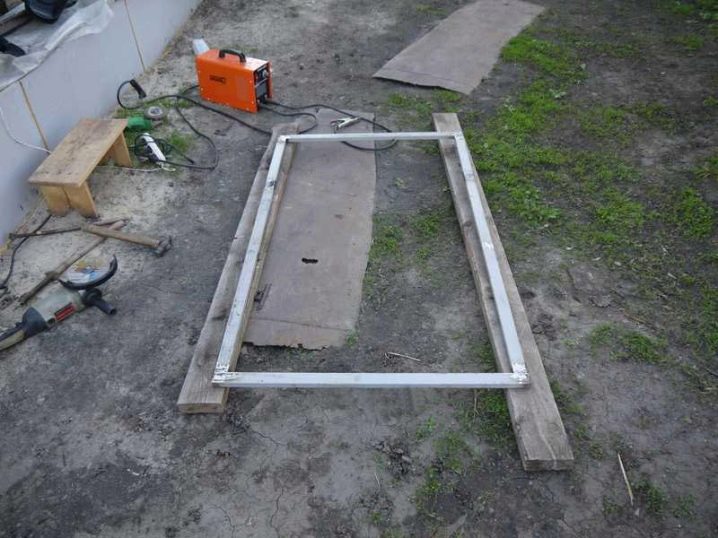
- We attach the sheathing to the frame. We attach the pre-processed material (boards, solid or galvanized sheet of metal, lining) to the frame using self-tapping screws or rivets.
- Starting the installation of a metal wicket, it is necessary to firmly fix the support post and the frame of the wicket with clamps (auxiliary tools for fixing parts). You only need to leave a gap of about 3 mm by inserting the pieces of wire.
- We fix the door handle.
- We mount the castle.
- We hang the product on the supporting structure, having previously primed and painted the product.
These are the basic rules for installing wood and metal structures.
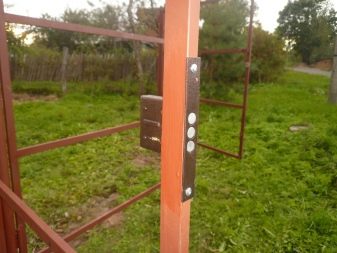

In the case when you have enough experience and decided to start installing custom-forged gates yourself, remember that installation here requires much more attention to detail. It is also important to take into account the width of the doorway, the weight of the structure, the depth of the pits for the supports, the reliability of the fasteners.
If you want your fence not to be repaired for as long as possible, take the correct installation of the product very seriously. If necessary, contact a specialist for help.
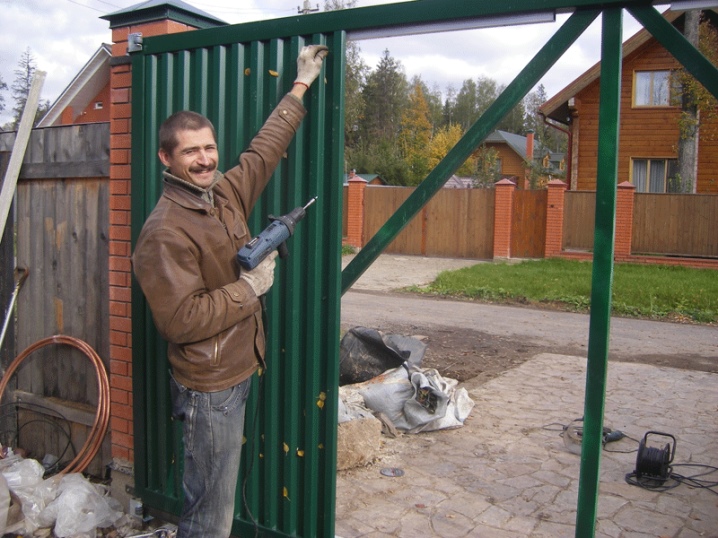
Manufacturers
The advantages of corrugated board are undeniable: lightweight, environmentally friendly, durable, easy to transport and install material. The most popular manufacturers (according to users) of these products are MetalProfil and Tegola, the Finnish company Ruukki has proven itself well. Their certified products are famous for their proven Finnish quality and are distributed throughout the CIS countries. Has a wide range of applications - from roofing to country gates.

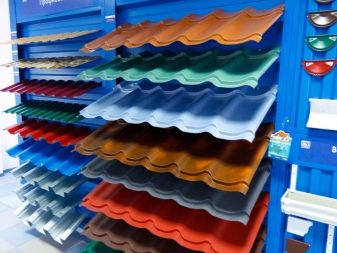
ThyssenKrupp (Germany) and ArcelorMittal (Belgium) are recognized leaders in the production of euro shtaketnik. However, recently, the domestic manufacturer has begun to delight with products of the same high quality, but in a completely different price category. Pay attention to the brands NovaLux, Grand Line, Staleks.

Beautiful examples and options
For more inspiration, we suggest you familiarize yourself with the most unusual and graceful gates.
The most accessible and malleable material is wood. There are a huge number of varieties of wooden structures, among which you will definitely find something special!
All ingenious is simple! Take a look at the simplest picket and rack models. Nothing superfluous and very stylish.
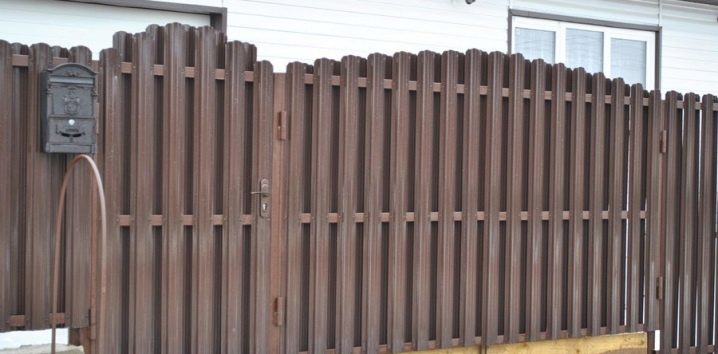
A wattle gate looks very unusual for a modern man in the street.
And this is not exactly a wattle fence, but it looks very cute.
The rustic style, implying the deliberate roughness of natural materials, is organically suitable not only for the entrance gate of the summer cottage, but also for a pretty cottage.
A very unusual and practical model of a gate with a viewing window for a dog.
So that there are no unpleasant surprises in the form of a two-meter alabai that suddenly jumped out, the observation window makes it possible to see the animal from afar. The function is twofold: firstly, the animal has the ability to see; secondly, a potential intruder can immediately understand that it is not worth even approaching the house.
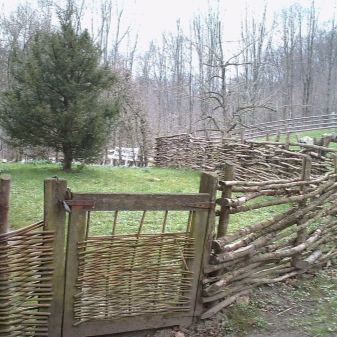
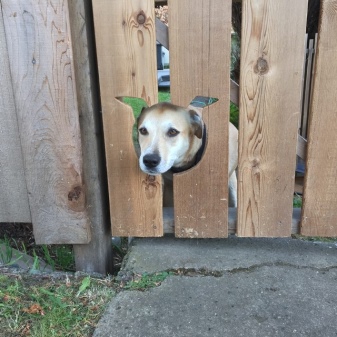
Garden gates are usually of different sizes than entrance gates. As a rule, they are low, often have an arch, and are made openwork. Such a garden gate seems to be quite simple, but the originally curved top attracts attention and creates an impression of mystery. These garden gates are literally inviting guests.
Garden gates look very nice with flower decor. A variety of arches (rectangular, arched, in an oriental style) above the gate can help maintain the style of the entire site.
To enter the garden, an arrow-gate with a lancet top looks very elegant.
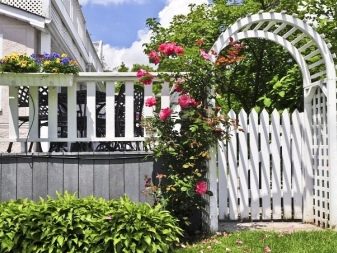
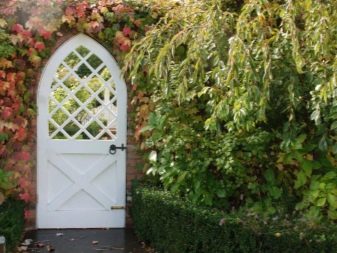
A sturdy entrance gate is made of more expensive wood and can look no less expensive than status steel doors.
A pergola is a special structure without a roof or wall. It can be a trellis tunnel with climbing plants or just a series of rectangular arches. Such a structure came to us from the Ancient East, famous for its striking temple architecture. In those distant times, the purpose of the pergola was to psychologically suppress the visitor who was heading to the priest or the ruler. Centuries have passed, but the effect created by the pergola remains relevant.
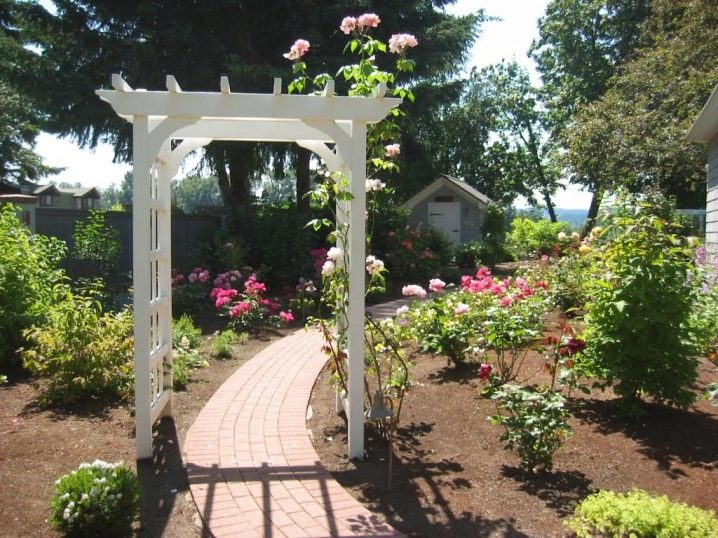
In Europe, this effect was softened due to the lightness of the structure and with the help of floral decoration around the perimeter. After the invention of arched structures, they began to be added to the pergola, which significantly reduced the effect of superiority.
Therefore, if you decide to make a gate with a pergola, you should not make it too monumental.
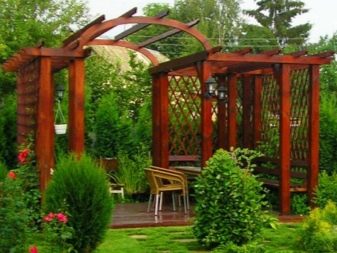
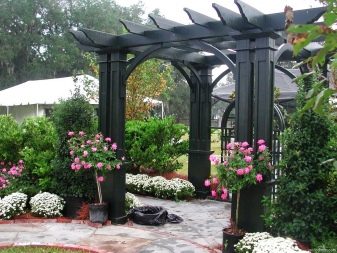
Metal wickets in their appearance range from abstract designs to almost palace gates.
Such a welded gate with a massive cobweb does not scare away at all, but, on the contrary, invites you to visit the owners.
Stunning beauty forged patterns, flowers, figures - a luxurious frame for the most demanding owners. Floral motives are very popular.
The entrance looks elegantly in the form of an onion.
Not entirely practical, but strikingly beautiful combination of forging and mosaics, glass.
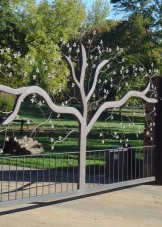
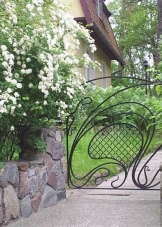
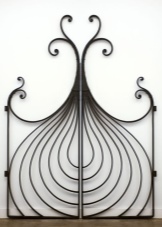
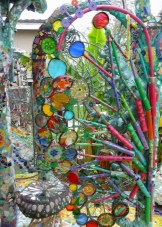
Openwork forged patterns that look airy with all their considerable weight look amazingly delicate.
The combination of metal and wood looks advantageous and practical.


There are endless ideas for creating a wicket. We wish you success in this difficult choice. And let the doors of your home become not only the most hospitable, but also the most original!
Beautiful ideas for decorating gates are in the next video.



































































The comment was sent successfully.